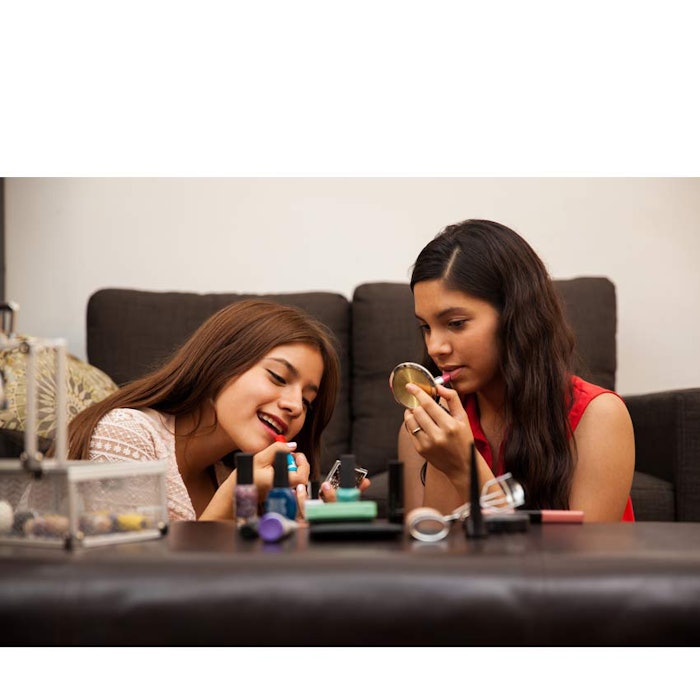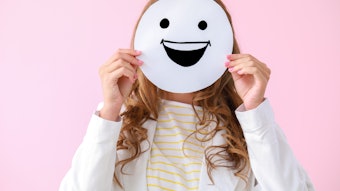
New scientific research is connecting teens and possible risks associated with beauty products although experts who are skeptical about the study have noted that toxicology risk is dose dependent. According to a recent study, adolescent girls who use personal care products that are labeled to be “free-of” phthalates, parabens, triclosan and BP-3, can reduce personal exposure to possible endocrine disrupting chemicals.
Teen girls might be at particular risk since it’s a time of rapid-reproductive development, and research has suggested that they use more personal care products per day than the average adult woman. —Kim Harley, associate director of the UC Berkeley Center for Environmental Research and Children’s Health
“Because women are the primary consumers of many personal care products, they might be disproportionately exposed to these chemicals,” said the study’s lead author Kim Harley, associate director of the UC Berkeley Center for Environmental Research and Children’s Health in a UC Berkeley report. “Teen girls might be at particular risk since it’s a time of rapid-reproductive development, and research has suggested that they use more personal care products per day than the average adult woman,” she added.
“Teen girls might be at particular risk since it’s a time of rapid-reproductive development, and research has suggested that they use more personal care products per day than the average adult woman,” she added.
PCPC Toxicologist Disagrees: It Doesn't Translate to Harm
Following this report, Linda Loretz, PhD, chief toxicologist at the Personal Care Products Council, said the levels reported for these ingredients have not been shown to cause negative health effects, and the mere presence of a substance does not translate to harm.
“Consumers are often confused by scary sounding claims about chemical risks that may sound science-based, but do not reveal anything about actual risk levels," Loretz said. "For example, the presence of trace levels of synthetic chemicals found in the human body does not mean there’s any danger to health. The substances that were included in the study are quickly excreted from the body, which is why they show up in urine; they do not bioaccumulate."
"Free-Of" for Three Days
According to “Reducing Phthalate, Paraben, and Phenol Exposure from Personal Care Products in Adolescent Girls: Findings from the HERMOSA Intervention Study” published in the journal Environmental Health Perspectives, a team of researchers enrolled 100 Latina girls in the youth-led, community-based participatory research intervention trial. The study’s aim was to determine whether using personal care products whose labels stated they did not contain these chemicals for three days could lower urinary concentrations.
Pre- and post-intervention urine samples were analyzed for phthalate metabolites, parabens, triclosan and BP-3.
4.png?auto=format%2Ccompress&fit=max&q=70&w=400) Disrupting Endocrine Disruptors
Disrupting Endocrine Disruptors- The study found that concentrations of most of the chemicals found in the urine samples were reduced from 27% to as much as 45% after the participants used “free-of” products for three days.
- However, there were no significant changes seen in urinary concentrations of mono-n-butyl phthalate (MnBP) and mono-isobutyl phthalate (MiBP), which are used in personal care and beauty product formulas.
- Unexpectedly, paraben concentrations of the less common parabens, ethyl and butyl paraben, in particular increased, although those levels were small and could have been caused by accidental contamination or a substitution not listed on the labels, according to the study’s authors.
Reducing Chemical Exposure
“This study demonstrates that techniques available to consumers, such as choosing personal care products that are labeled to be free of phthalates, parabens, triclosan and BP-3, can reduce personal exposure to possible endocrine disrupting chemicals. Involving youth in the design and implementation of the study was key to recruitment, retention, compliance, and acceptability of the intervention,” noted the study’s authors.
However, the PCPC's toxicologist disagreed and noted certain issues not addressed in the study.
“The study did not take into account other possible sources of these substances, such as dietary exposure," said Loretz. "A more detailed study design would be needed to determine the role of personal care products in exposure to these materials."
Regarding the topic of endocrine activity, Loretz said more education and study is needed as it is often misunderstood and misused. "Many tested substances, both natural and synthetic, can impact endocrine activity. For example, natural chemicals in vegetables such as broccoli, cauliflower, and soybeans have hormone-like activity," she added.
"Free-Of" Formulas for the Future
Amid a growing amount of legislation and consumer activism surrounding chemicals in beauty and personal care products, there has been a trend of beauty bloggers and vloggers touting their so-called DIY “non-toxic” beauty products created at home. To this end, cosmetic and beauty companies have been tasked with creating more “free-of” beauty products; however, formulators have noted that preservation is usually the number one technical issue associated with creating natural and organic cosmetics.
So what happens when R&D needs to create a product that’s fragrance-free, paraben-free and contains no formaldehyde donors? Discover some solutions in GCI’s “Prelaunch Thoughts” and read more details about the UC Berkeley study on GCI's affiliate site Cosmetics & Toiletries.










